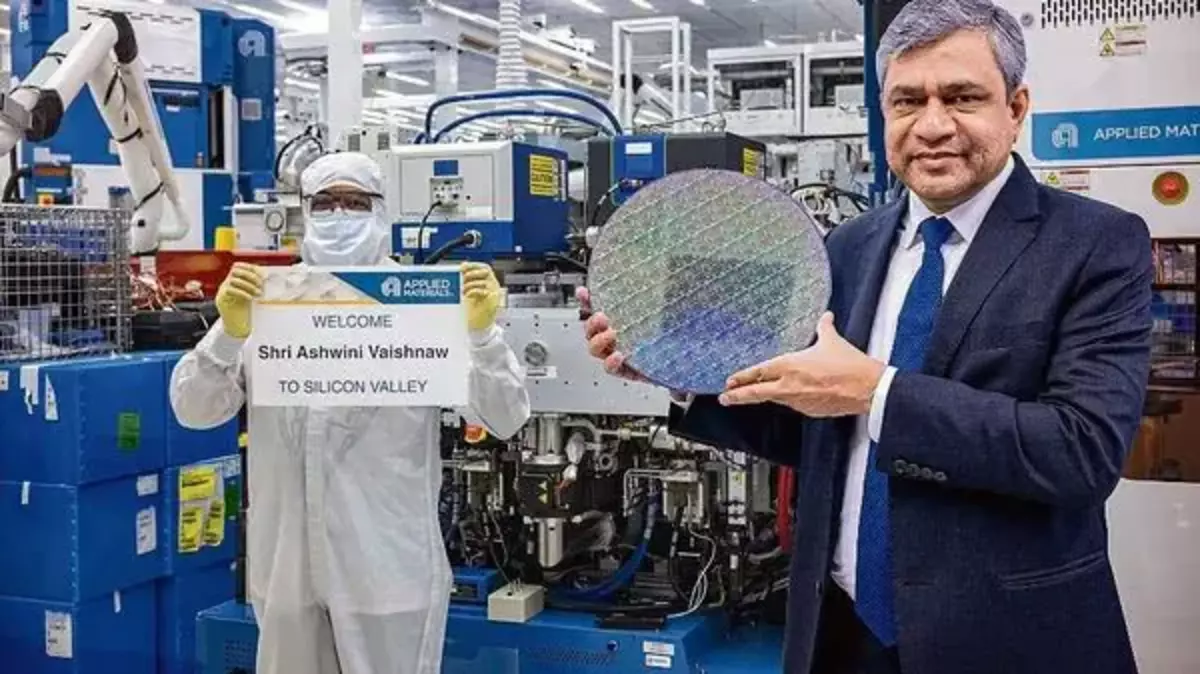Introduction:
In a world driven by technology, the semiconductor industry stands out as the cornerstone of innovation and progress. As we step into 2024, the allure of a career in semiconductors has never been stronger.
Here are five compelling reasons why making the switch to this booming industry could be one of the smartest career moves you make:
Follow us on LinkedIn for everything around Semiconductors & AI
5 Reasons Why 2024 Could Be the Perfect Time to Switch to a Career in Semiconductors
1. Hardware Renaissance in the Post-Software Era:
In the realm of technology, software has long been hailed as the primary driver of innovation and value creation. However, a paradigm shift is underway, marked by the resurgence of hardware prominence.
As software functionalities become increasingly commoditized and ubiquitous, the focus is now shifting towards hardware differentiation and optimization.This transition represents a watershed moment, marking the first time in half a century post the industrial revolution where hardware takes center stage in the tech narrative. Semiconductors, as the foundational building blocks of hardware, are at the forefront of this renaissance.
Their role in enabling advanced computing capabilities, powering interconnected devices, and facilitating emerging technologies like AI and IoT is paramount.As a result, the semiconductor industry finds itself in a position of unprecedented importance and opportunity. Professionals entering this field not only contribute to the development of cutting-edge hardware solutions but also spearhead the technological advancements driving the next wave of innovation.
In a landscape where hardware innovation reigns supreme, semiconductors emerge as the linchpin of progress, offering a gateway to unparalleled career prospects and industry impact in 2024.
2. Critical Role in AI Computing:
Artificial Intelligence (AI) has emerged as a transformative force across various industries, revolutionizing how we interact with technology and data. At the heart of AI lies the need for powerful computational capabilities, which are heavily reliant on semiconductors. From the specialized chips powering neural networks to the high-performance processors driving machine learning algorithms, semiconductors form the backbone of AI computing infrastructure.
As AI applications continue to proliferate, the demand for advanced semiconductor technologies tailored to AI workloads is skyrocketing. These include specialized chips like Graphics Processing Units (GPUs), Field-Programmable Gate Arrays (FPGAs), and Application-Specific Integrated Circuits (ASICs), optimized to accelerate AI computations. Moreover, the development of neuromorphic and quantum computing architectures, enabled by cutting-edge semiconductor research, promises to unlock new frontiers in AI innovation.
Therefore, in the age of AI computing, semiconductors play an indispensable role in fueling the intelligence revolution. A career in the semiconductor industry not only offers the opportunity to contribute to groundbreaking AI advancements but also ensures relevance and resilience in a technology landscape increasingly shaped by artificial intelligence.
Read more: $7 Trillion: Why Sam’s Radical Plan for the Next Era of Computing Makes Sense
3. High Demand & Job Security:
The demand for semiconductors is soaring, with these tiny chips powering everything from smartphones and laptops to artificial intelligence and autonomous vehicles. This insatiable demand translates into a robust job market. This offers a plethora of opportunities for those skilled in semiconductor design, manufacturing, and engineering.
The Semiconductor Industry Association (SIA) projects global semiconductor sales to reach a record high of $688 billion in 2024.
Indeed reports over 138,000 open semiconductor jobs in the US alone as of May 2024
Learn more about Job Search in VLSI
4. Competitive Salaries & Benefits:
One of the most attractive aspects of a career in semiconductors is the lucrative compensation packages it offers. The Bureau of Labor Statistics highlights the semiconductor industry as one of the highest paying sectors in the tech realm. Moreover, with a talent shortage looming over the industry, companies are willing to go the extra mile to attract and retain top talent, offering competitive salaries, generous benefits, and enticing perks.
US Statistics:
A 2023 Bureau of Labor Statistics report showed the median annual wage for computer hardware engineers at $127,790 . Many chip companies offer competitive benefits packages including health insurance, retirement plans, and stock options.
India Stats:
Average Salary: While data can vary, sources like 6figr.com suggest an average salary of ₹29 lakhs (around $35,000 USD based on current exchange rates) for semiconductor professionals in India. It’s important to note this is an average. Salaries can range widely depending on factors like experience, location, specific role, and company.
Starting Salaries: There are reports of starting salaries for VLSI (Very-Large-Scale Integration) design engineers, a key role in chip design, being 2-3 times higher than those for software engineers in India, potentially reaching ₹10 lakh (around $12,000 USD) per annum
Senior Roles: Salaries can climb significantly with experience. Project managers can see salaries in the range of ₹15-25 lakh (around $18,000 – $30,000 USD), and senior leadership like directors or vice presidents can reach ₹50-100 lakh (around $60,000 – $120,000 USD) per annum
Read More: 9 Job Profiles For Diploma Holders in a Semiconductor Fab
5. Innovation & Challenge:
For those who thrive on intellectual stimulation and technological advancement, the semiconductor industry presents an ideal playground. It’s a field that’s constantly evolving, with new chip designs, manufacturing processes, and applications emerging at a rapid pace.
Whether you’re passionate about pushing the boundaries of Moore’s Law or tackling the complexities of nanoscale engineering, the semiconductor industry offers endless opportunities for innovation and challenge.
Here are some Examples of innovations that are pushing the boundaries beyond traditional silicon chip technology:
3D Chip Stacking:
This technique involves vertically stacking multiple layers of silicon chips, creating a more compact and powerful package. This allows for increased transistor density without needing to shrink individual transistors to the same degree as traditional Moore’s Law scaling.
Gate-All-Around (GAA) Transistors:
This new transistor design wraps the gate material around the channel on all sides, enabling better control of current flow and potentially overcoming some limitations of miniaturization in traditional finFET transistors used today.
Neuromorphic Computing:
This approach aims to design chips that mimic the structure and function of the human brain. These chips could be much more efficient at handling tasks like image and pattern recognition compared to traditional processors.
New Materials Beyond Silicon:
While Gallium Nitride (GaN) is one example, other materials like graphene and even exotic two-dimensional materials are being explored for their potential to create faster, more efficient transistors with unique properties like high thermal conductivity or superconductivity.
Advanced Lithography Techniques:
Extreme Ultraviolet (EUV) lithography is currently the cutting edge for patterning transistors on chips. However, even more advanced techniques like High-NA EUV or even next-generation technologies like X-ray lithography are being researched to allow for further miniaturization of features on chips.
These are just a few examples, and the field of semiconductor innovation is constantly evolving. Researchers are exploring various avenues to continue the miniaturization trend or even move beyond it to create entirely new chip architectures for future computing needs.
Read more: 10 Job Profiles in Semiconductor Chip Fabrication & Required Skill Sets
Conclusion:
In conclusion, if you seek a stable, well-paying job with room for growth and innovation, consider Making a Career in Semiconductors in 2024. Its high demand, competitive salaries, global reach, and long-term growth potential make it an ideal choice in 2024. Embrace the challenge, seize the opportunity, and shape the future of technology.



